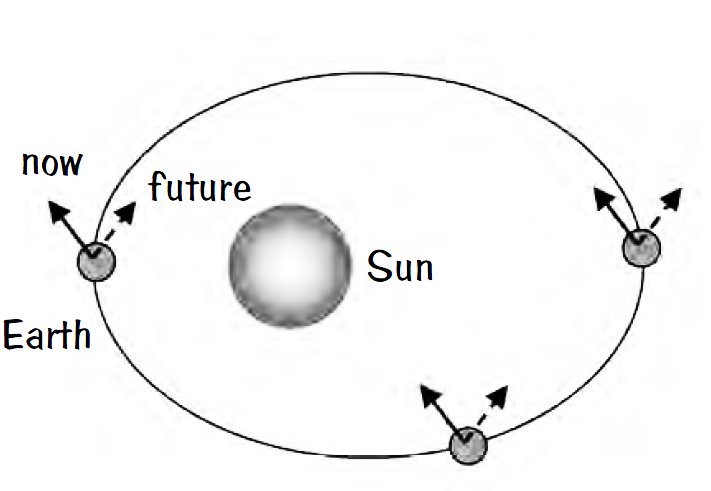


 الفيزياء الكلاسيكية
الفيزياء الكلاسيكية
 الكهربائية والمغناطيسية
الكهربائية والمغناطيسية
 علم البصريات
علم البصريات
 الفيزياء الحديثة
الفيزياء الحديثة
 النظرية النسبية
النظرية النسبية
 الفيزياء النووية
الفيزياء النووية
 فيزياء الحالة الصلبة
فيزياء الحالة الصلبة
 الليزر
الليزر
 علم الفلك
علم الفلك
 المجموعة الشمسية
المجموعة الشمسية
 الطاقة البديلة
الطاقة البديلة
 الفيزياء والعلوم الأخرى
الفيزياء والعلوم الأخرى
 مواضيع عامة في الفيزياء
مواضيع عامة في الفيزياء|
Read More
Date: 2-10-2016
Date: 10-10-2016
Date: 25-10-2016
|
January Summer
Contrary to the popular belief that Earth is closest to the Sun on about June 23 or possibly December 22 each year, the date of perihelion actually falls between January 2 and January 5! In the Northern Hemisphere, we experience winter on this January date because the North Polar axis is tilted away from the Sun. The Southern Hemisphere enjoys a warm summer at this time. Will the Northern Hemisphere ever enjoy summer in January?
Answer
Yes, the Northern Hemisphere enjoys summer in January quite often (in the cosmic scheme of things), repeating, every 25,800 years, the period of Earth’s precession. Just like a top with its axis precessing, Earth experiences a precession of its axis with respect to the stars with a 25,800-year period of oscillation. So every 12,900 years the

North Pole will be alternating from the extreme of being pointed toward the Sun and to being pointed away from the Sun in January. At present and for some years to come, the North Pole points away from the Sun when Earth is at the perihelion position in its orbit on about January 5 each year. Gradually over the next 12,900 years the North Pole will precess around to receive more and more radiant energy in January.
However, we need not wait nearly so long because the ellipse of Earth’s orbit is also precessing, so our summer will coincide with perihelion in only about 10,000 years!



|
|
|
|
دراسة تكشف "مفاجأة" غير سارة تتعلق ببدائل السكر
|
|
|
|
|
|
|
أدوات لا تتركها أبدًا في سيارتك خلال الصيف!
|
|
|
|
|
|
|
العتبة العباسية المقدسة تؤكد الحاجة لفنّ الخطابة في مواجهة تأثيرات الخطابات الإعلامية المعاصرة
|
|
|